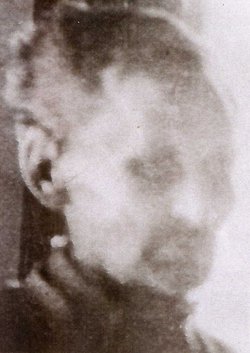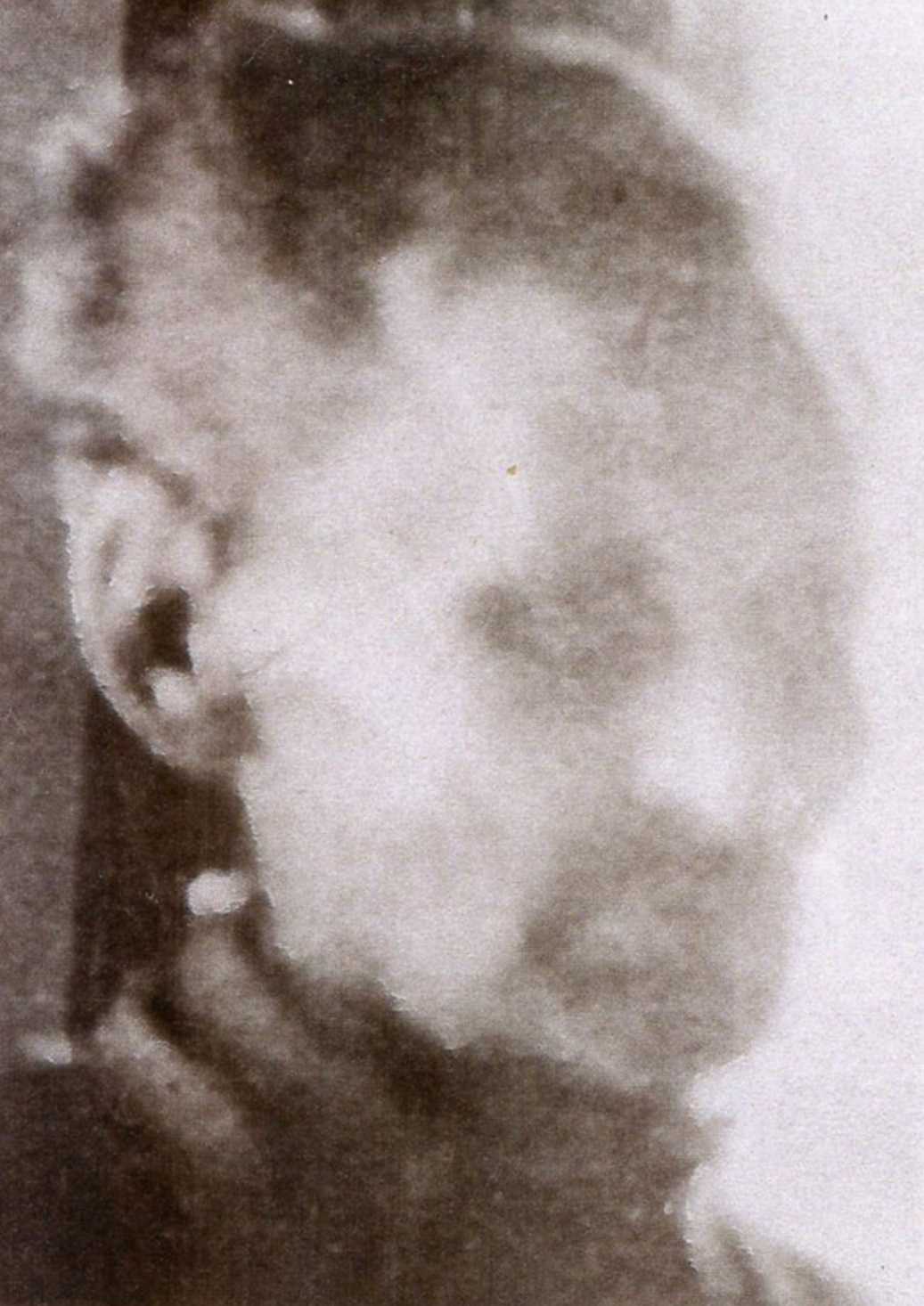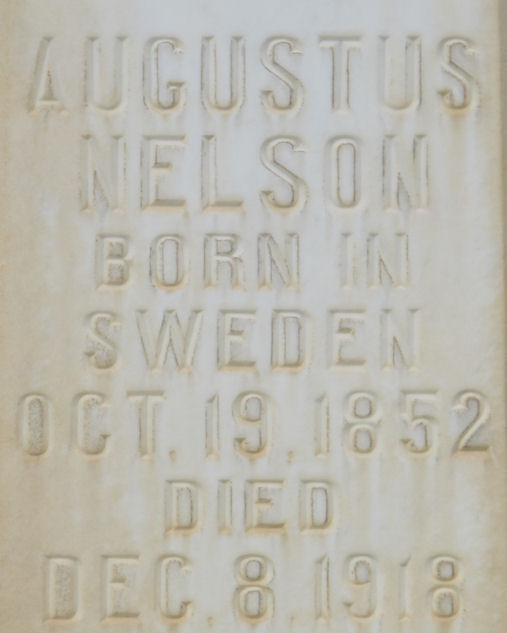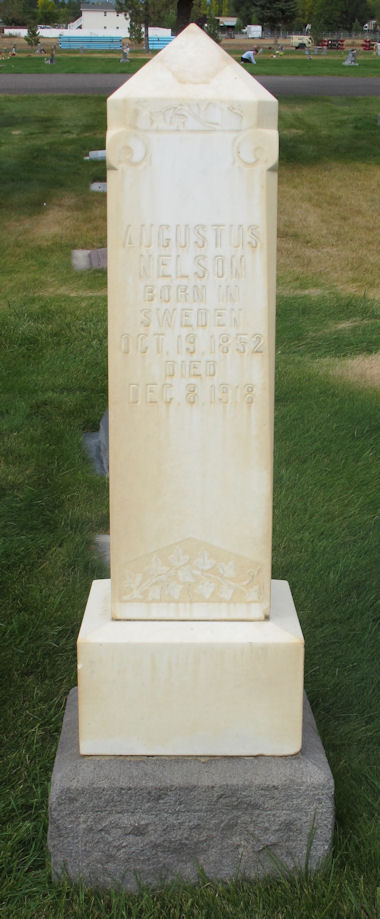When Augustus was ten years old, the Mormon Missionaries converted the family to the Latter-Day Saint religion. They were naturally religious and soon found the principles of the new church suited their beliefs and gave them new freedom of worship. Mormons were not popular so they found themselves without friends and the urge to go to Zion became very strong. The decision to go was made and they sold their home and farm and booked passage for America. They left behind all that had been dear to them.
The trip across the ocean was a long tragic one. Three months of rough seas and many storms. The lack of good drinking water, poor food, and impure air impaired their health. When about half-way across the ocean, measles broke out among the passengers. The children suffered most as there was no room to quarantine the sick. Their low vitality caused the disease to be extremely hard. The Nelson children were all sick at the same time, giving the parents no time for special care or rest. Three of the children died and one was left almost blind. It is hard to visualize the depth of their sorrow as the bereaved parents watched while their fifteen-year old son, Anders, almost a man, was tied in a blanket and slid down the plank into the rough black water. Most of the burials were done at night to save the passengers the terrible ordeal of watching a loved one swallowed up in the cold uncaring sea. A few days later his sister, Anna, a young woman of thirteen years followed Anders into the awful watery grave. Mary survived the disease but her eyes were affected by the high fever and the tragedy of blindness seemed imminent. The darling baby Henrik seemed to be recovering when a sudden change snatched him away. All their efforts were in vain. No words can express the anguish of these loving parents. Now all their attention was given to Mary. Her life was spared but she could no longer see and needed to be guided where ever she went. Out of the six children, Andrew(Anders), Anna, and Henric (Henry) died. Augustus, Mary and Nels came to Mt. Pleasant, Utah.
Their trek over the plains was much the same as others. Ox teams carried them to Utah and in due time, they arrived in the Salt Lake Valley. Mary's eye sight was beginning to come back, but she was partially blind the rest of her life. The family found their way to Mt. Pleasant in 1863, where they became farmers using their knowledge and experience from Sweden.
On the nineteenth of April, 1876, Augustus married a lovely young lady, Ann Catherine Porter. They traveled to Salt Lake in a wagon, taking two days to make the trip, to be married in the Endowment House. Ann told the story of how she carried on her lap a basket of dried apples and plums to Eliza R. Snow. She was thrilled to be of service to her.
Augustus took up a quarter section of land three miles west of town with Christian Peel. Each man took half. Each built a log house and a log grainery. The logs were hauled by ox team from the mountains east of town, and each man helped the other. They had to carry water from a spring at the foot of the hill up to their homes until a pipe was driven into the ground to make a flowing well of delicious cold water. This well produced enough water for home and garden use as well. To keep milk, butter, and eggs cool,m a box was placed over the water with a burlap sack which absorbed water and allowed fresh air to cool and circulate. This "cool box" as it was called was used for many years.
Cattle did well on the large meadows. Pigs and chickens helped to supply food along with the garden produce. Grain was raised on the rich fertile fields.
Twelve children were born to this humble home. One died in infancy, eleven reached maturity. The log home became too small. so a four rooms of red brick were added to the log home.
The children were educated in a one room school house two miles west of their home. As education was emphasized in their home, the older girls, Olivia, Ada and Mae, as they reached college age were allowed to go to the BYU Academy in Provo. They stayed in homes and worked their way. Here they learned to sew and along with their mothers help they became expert dressmakers. Ada also became a school teacher.
Augustus saw a good opportunity for his growing boys to go into the sheep business. He went into partnership with Andrew Larsen. As the business grew the Nelson brothers purchased more ground and went into the sheep business of their own. This became their life's work.
About 1900, Augustus was stricken with arthritis or rheumatism as it was called. He became confined to his rocking chair, used in place of a wheel chair, for the rest of his life. This interrupted the schooling of the boys as now they were required to do all the farm work. They could get about five months of schooling in the winter as fall and spring were busy times on the farm.
In 1906 the family built a beautiful brick home at First North and Fifth West. Here the abundant life of the family was enjoyed. Memories remind us of marriages, graduations, birthday parties, Christmas celebrations and the homecoming of two sons, Hugh and George from World War I.
December 9, 1918, during the terrible flu epidemic, Augustus passed away. He left behind him a better place. He was proud of his large family of fine men and women. He left much improved farm land and good livestock.
During his illness, he guided his family from his big rocking chair. He kept track of appointments such as water turns, also sheepcamp supplies, and finances.
All his life he remembered, but talked little of the terrible tragedy when crossing the ocean. An impression on a ten year old boy, he never forgot.
Information provided by Lana Hardy
When Augustus was ten years old, the Mormon Missionaries converted the family to the Latter-Day Saint religion. They were naturally religious and soon found the principles of the new church suited their beliefs and gave them new freedom of worship. Mormons were not popular so they found themselves without friends and the urge to go to Zion became very strong. The decision to go was made and they sold their home and farm and booked passage for America. They left behind all that had been dear to them.
The trip across the ocean was a long tragic one. Three months of rough seas and many storms. The lack of good drinking water, poor food, and impure air impaired their health. When about half-way across the ocean, measles broke out among the passengers. The children suffered most as there was no room to quarantine the sick. Their low vitality caused the disease to be extremely hard. The Nelson children were all sick at the same time, giving the parents no time for special care or rest. Three of the children died and one was left almost blind. It is hard to visualize the depth of their sorrow as the bereaved parents watched while their fifteen-year old son, Anders, almost a man, was tied in a blanket and slid down the plank into the rough black water. Most of the burials were done at night to save the passengers the terrible ordeal of watching a loved one swallowed up in the cold uncaring sea. A few days later his sister, Anna, a young woman of thirteen years followed Anders into the awful watery grave. Mary survived the disease but her eyes were affected by the high fever and the tragedy of blindness seemed imminent. The darling baby Henrik seemed to be recovering when a sudden change snatched him away. All their efforts were in vain. No words can express the anguish of these loving parents. Now all their attention was given to Mary. Her life was spared but she could no longer see and needed to be guided where ever she went. Out of the six children, Andrew(Anders), Anna, and Henric (Henry) died. Augustus, Mary and Nels came to Mt. Pleasant, Utah.
Their trek over the plains was much the same as others. Ox teams carried them to Utah and in due time, they arrived in the Salt Lake Valley. Mary's eye sight was beginning to come back, but she was partially blind the rest of her life. The family found their way to Mt. Pleasant in 1863, where they became farmers using their knowledge and experience from Sweden.
On the nineteenth of April, 1876, Augustus married a lovely young lady, Ann Catherine Porter. They traveled to Salt Lake in a wagon, taking two days to make the trip, to be married in the Endowment House. Ann told the story of how she carried on her lap a basket of dried apples and plums to Eliza R. Snow. She was thrilled to be of service to her.
Augustus took up a quarter section of land three miles west of town with Christian Peel. Each man took half. Each built a log house and a log grainery. The logs were hauled by ox team from the mountains east of town, and each man helped the other. They had to carry water from a spring at the foot of the hill up to their homes until a pipe was driven into the ground to make a flowing well of delicious cold water. This well produced enough water for home and garden use as well. To keep milk, butter, and eggs cool,m a box was placed over the water with a burlap sack which absorbed water and allowed fresh air to cool and circulate. This "cool box" as it was called was used for many years.
Cattle did well on the large meadows. Pigs and chickens helped to supply food along with the garden produce. Grain was raised on the rich fertile fields.
Twelve children were born to this humble home. One died in infancy, eleven reached maturity. The log home became too small. so a four rooms of red brick were added to the log home.
The children were educated in a one room school house two miles west of their home. As education was emphasized in their home, the older girls, Olivia, Ada and Mae, as they reached college age were allowed to go to the BYU Academy in Provo. They stayed in homes and worked their way. Here they learned to sew and along with their mothers help they became expert dressmakers. Ada also became a school teacher.
Augustus saw a good opportunity for his growing boys to go into the sheep business. He went into partnership with Andrew Larsen. As the business grew the Nelson brothers purchased more ground and went into the sheep business of their own. This became their life's work.
About 1900, Augustus was stricken with arthritis or rheumatism as it was called. He became confined to his rocking chair, used in place of a wheel chair, for the rest of his life. This interrupted the schooling of the boys as now they were required to do all the farm work. They could get about five months of schooling in the winter as fall and spring were busy times on the farm.
In 1906 the family built a beautiful brick home at First North and Fifth West. Here the abundant life of the family was enjoyed. Memories remind us of marriages, graduations, birthday parties, Christmas celebrations and the homecoming of two sons, Hugh and George from World War I.
December 9, 1918, during the terrible flu epidemic, Augustus passed away. He left behind him a better place. He was proud of his large family of fine men and women. He left much improved farm land and good livestock.
During his illness, he guided his family from his big rocking chair. He kept track of appointments such as water turns, also sheepcamp supplies, and finances.
All his life he remembered, but talked little of the terrible tragedy when crossing the ocean. An impression on a ten year old boy, he never forgot.
Information provided by Lana Hardy
Family Members
Sponsored by Ancestry
Advertisement
Records on Ancestry
Sponsored by Ancestry
Advertisement

















